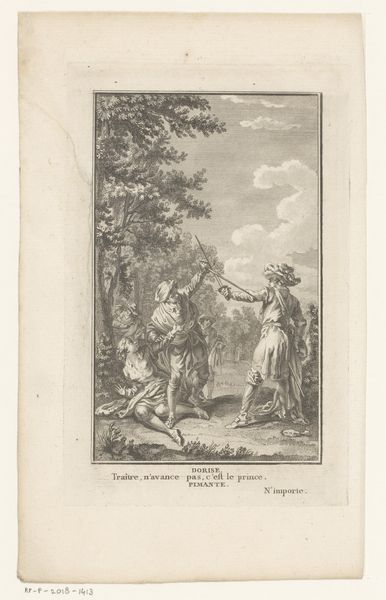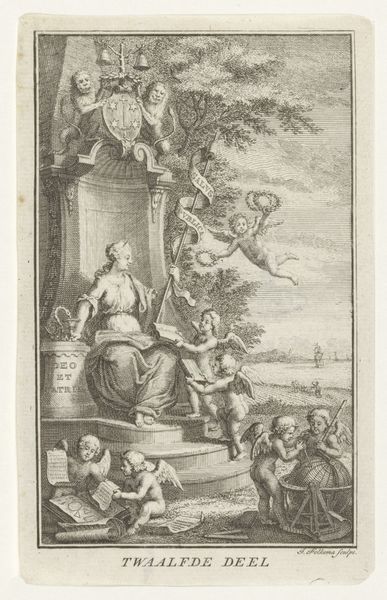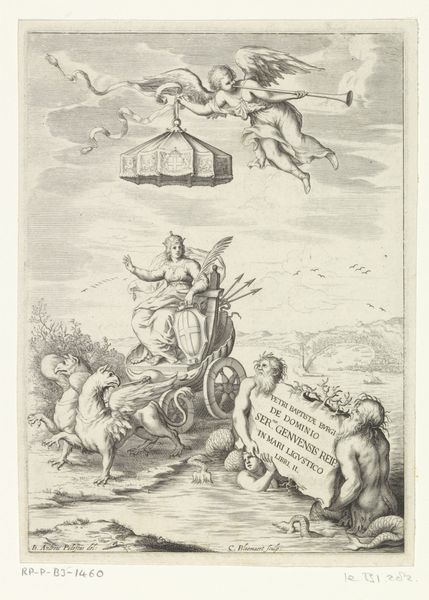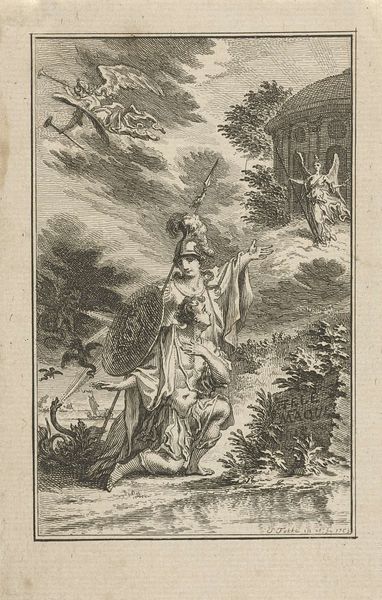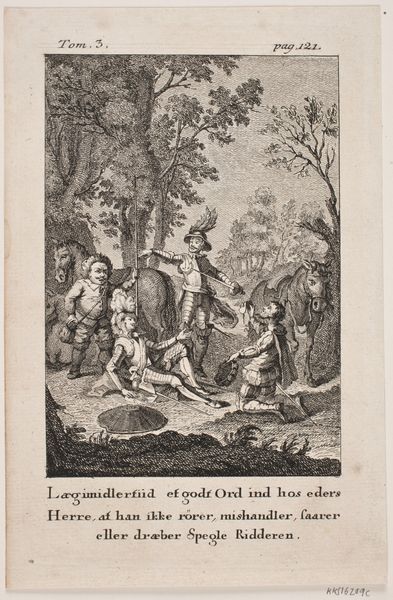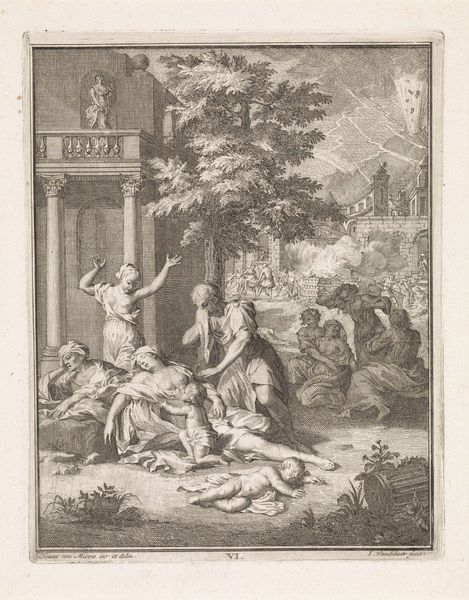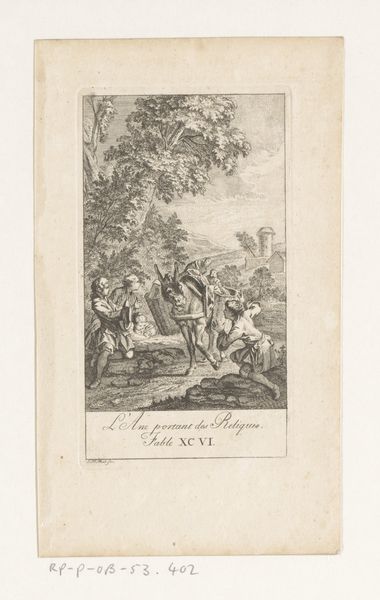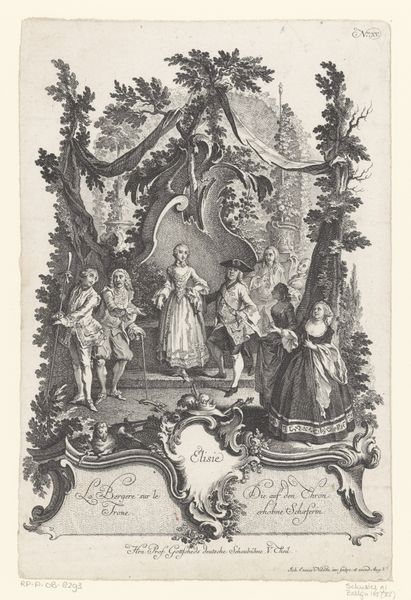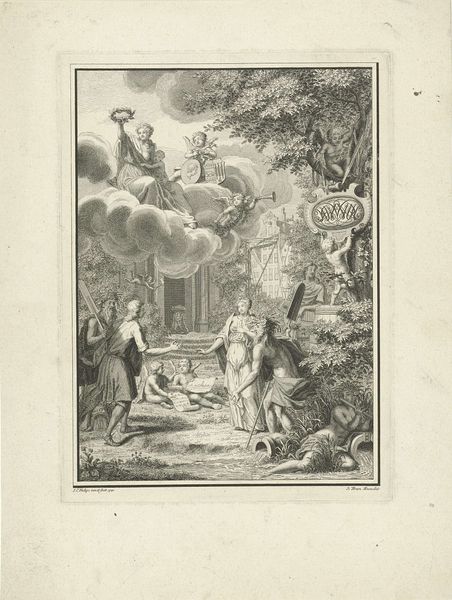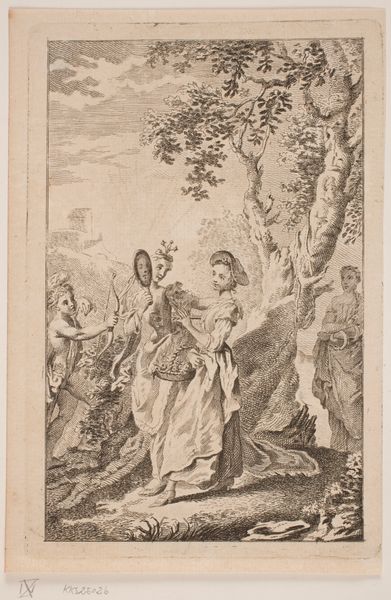
etching
#
baroque
#
etching
#
landscape
#
figuration
#
history-painting
Dimensions: height 263 mm, width 193 mm
Copyright: Rijks Museum: Open Domain
Editor: This etching, "Odysseus on the Island of Circe," dating from 1632 to 1668, is by Robert van den Hoecke and currently housed in the Rijksmuseum. I'm struck by the artist's precise rendering of the figures, considering the constraints of the etching process. What's your interpretation? Curator: As a materialist, I’m drawn to how van den Hoecke employs etching to narrate this moment from the Odyssey. The use of the etched line wasn't merely representational but a crucial aspect of the artwork’s meaning. Look at the varying density of the lines - how do they work to suggest light and shadow, therefore contributing to the narrative's drama? Consider also the access to materials. The plates used for etching at this time... where were they sourced from, and who had access to such materials? Editor: So, you are saying that the *materiality* of the etching--the process and its limits--are as significant as the narrative itself? Curator: Precisely. This wasn’t just about illustrating Homer. The act of creating, of working with metal and acid, brings into play socio-economic realities of the period. This connects the heroic narrative to a tangible world of workshops and artisanal labor, moving beyond a singular reading focused just on heroism. What does this interplay of 'high' classical subject matter with everyday material suggest to you about the value placed on labor at the time? Editor: It’s like van den Hoecke used the printmaking process to bridge the gap between a distant myth and the contemporary realities of his viewers. Something I've never considered! Curator: Indeed. Etching allowed for wider dissemination, impacting consumption. Analyzing such artworks within this lens exposes the processes and choices embedded in its production. Understanding who makes the image and *how* they do it, sheds light on the work’s cultural significance. Editor: So much more than just a picture... thanks for the perspective!
Comments
No comments
Be the first to comment and join the conversation on the ultimate creative platform.
